Abstract
The generalized Stokes-Einstein equation is used, together with the two-dimensional pressure equation, to analyze mutual diffusion in concentrated membrane systems. These equations can be used to investigate the role that both direct and hydrodynamic interactions play in determining diffusive behavior. Here only direct interactions are explicitly incorporated into the theory at high densities; however, both direct and hydrodynamic interactions are analyzed for some dilute solutions. We look at diffusion in the presence of weak attractions, soft repulsions, and hard-core repulsions. It is found that, at low densities, attractions retard mutual diffusion while repulsions enhance it. Mechanistically, attractions tend to tether particles together and oppose the dissipation of gradients or fluctuations in concentration, while repulsions provide a driving force that pushes particles apart. At higher concentrations, changes in the structure of the fluid enhance mutual diffusion even in the presence of attractions. It is shown that the theoretical description of postelectrophoresis relaxation and fluorescence correlation spectroscopy experiments must be modified if interacting systems are studied. The effects of interactions on mutual diffusion coefficients have probably already been seen in postelectrophoresis relaxation experiments.
Full text
PDF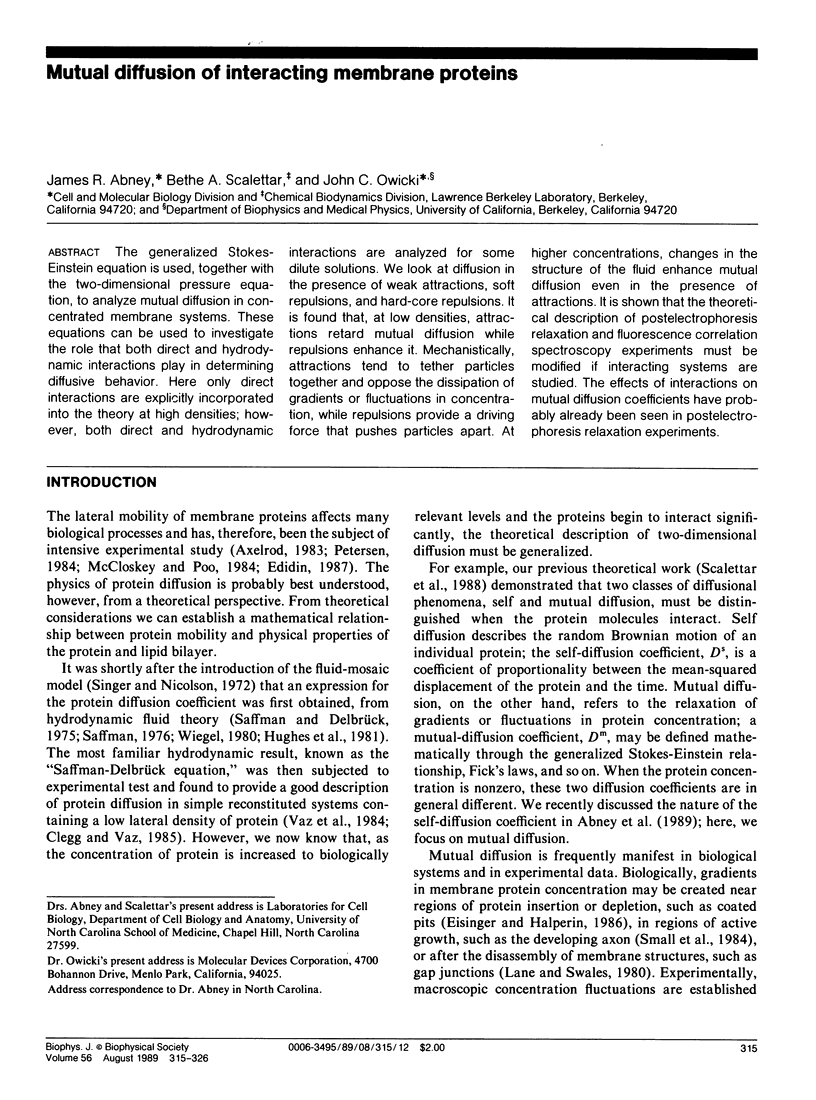
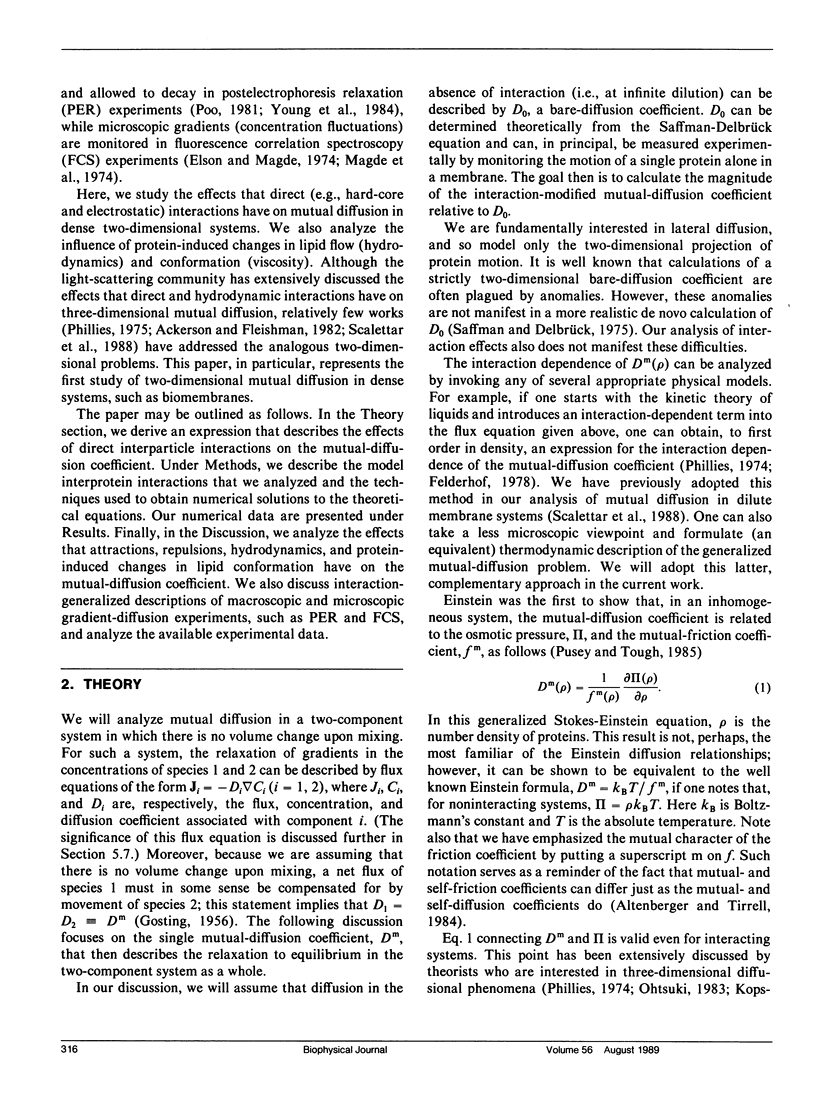
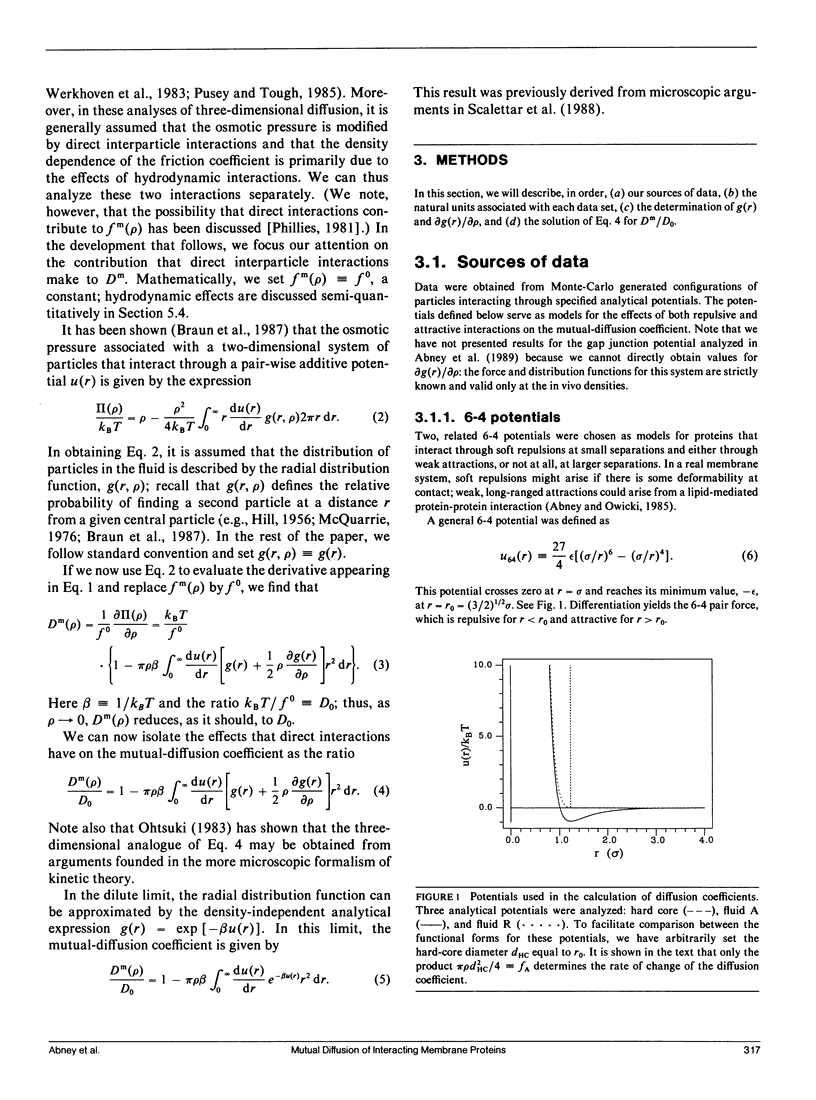
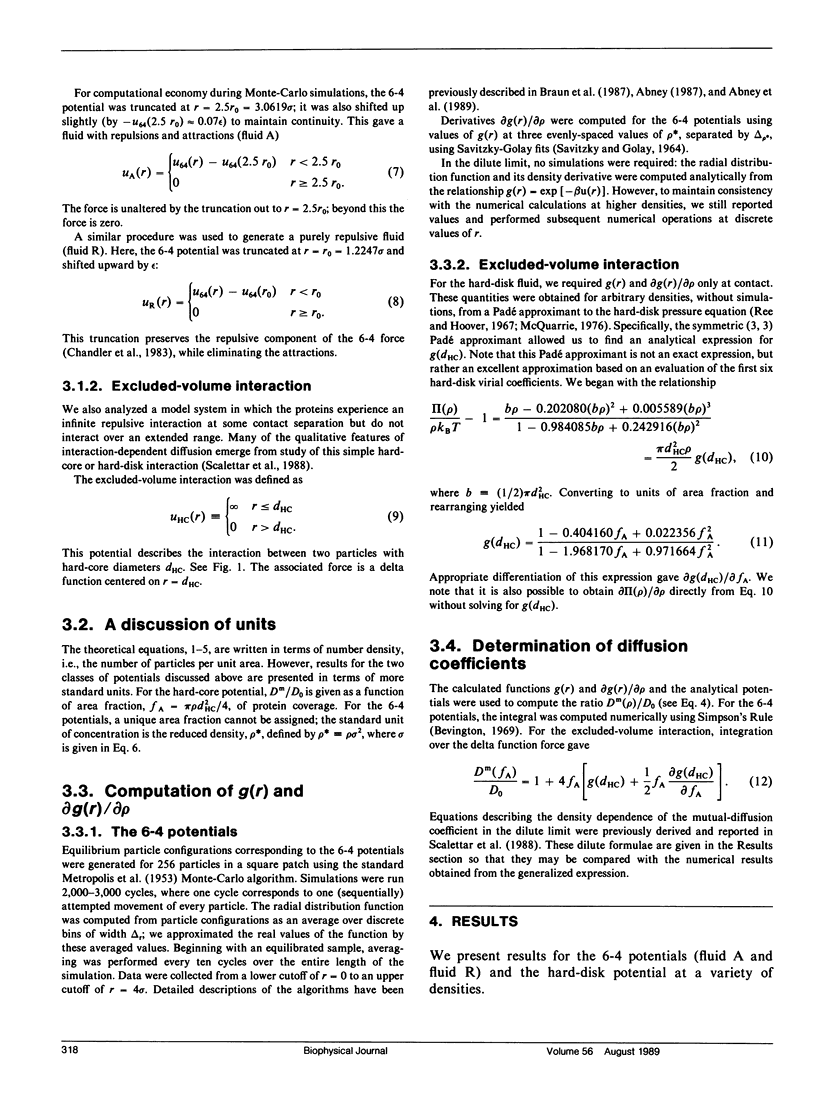
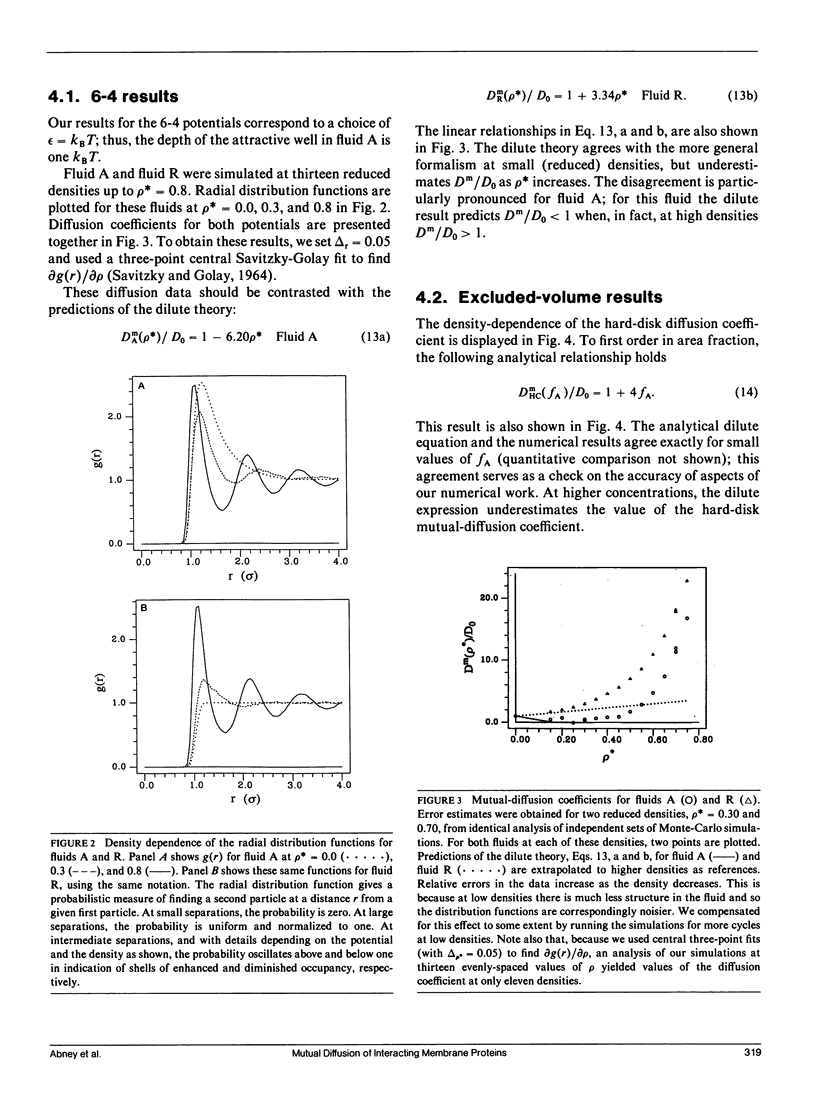
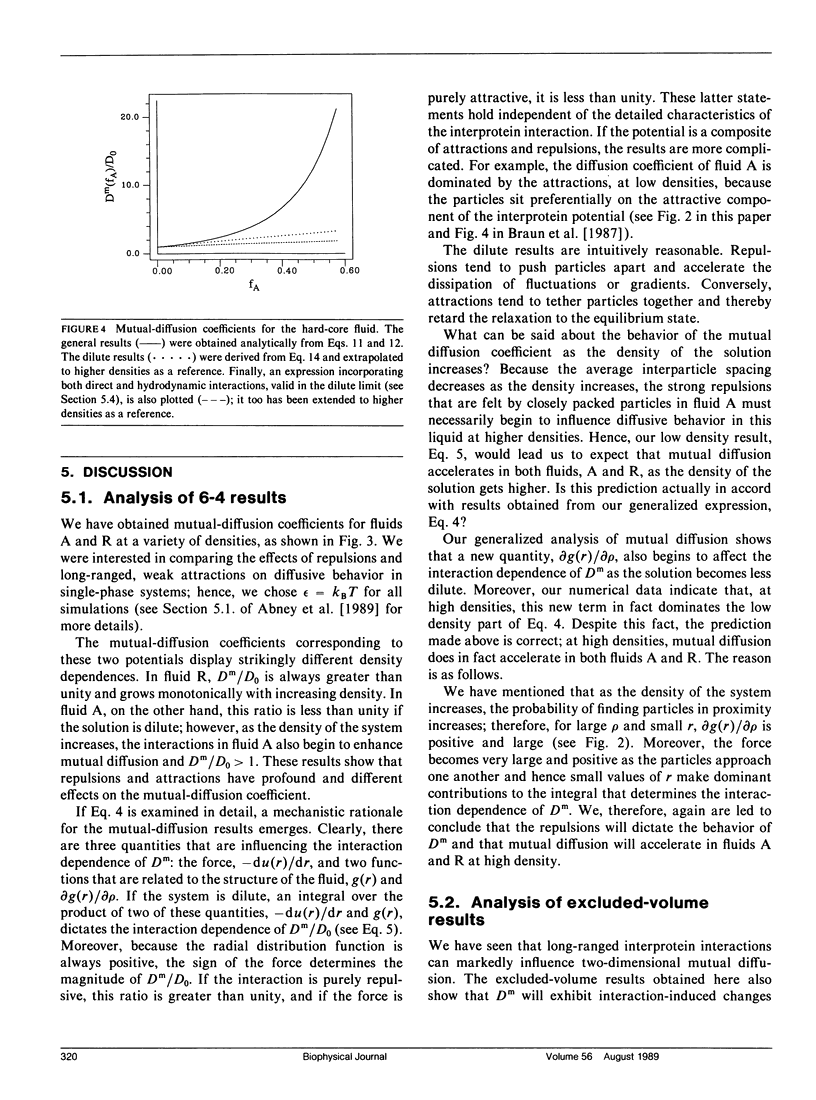
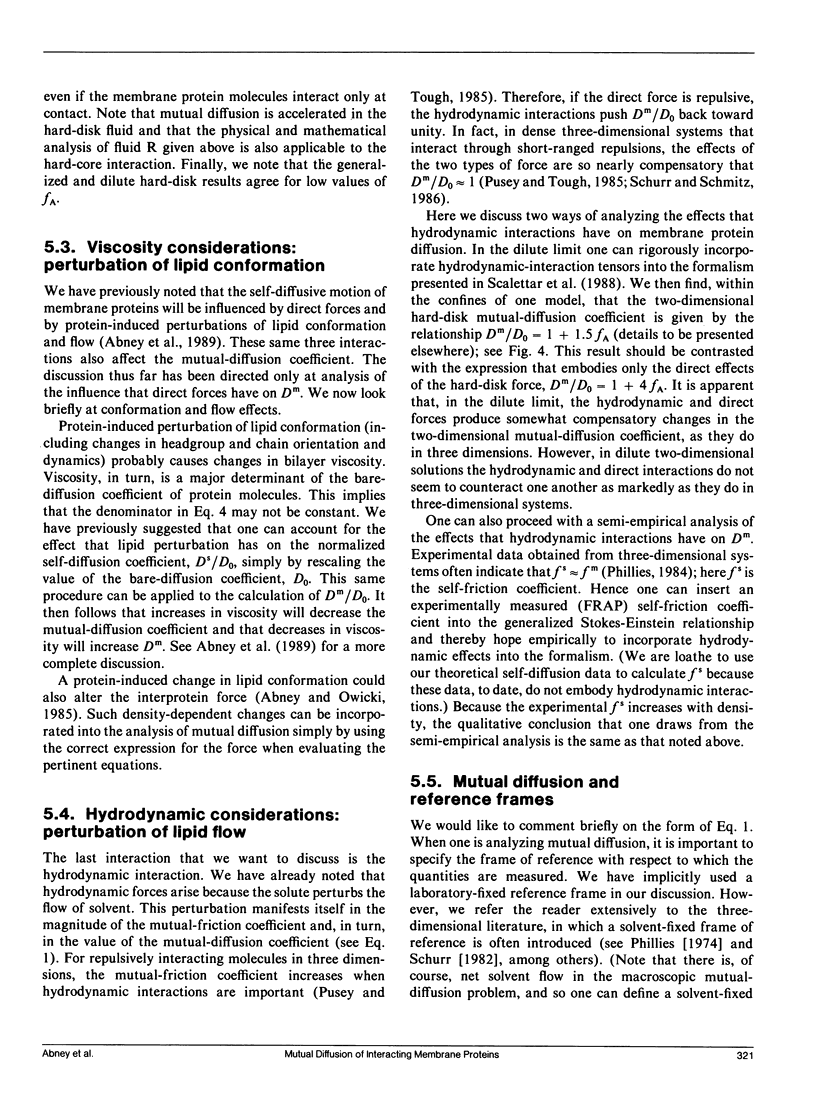
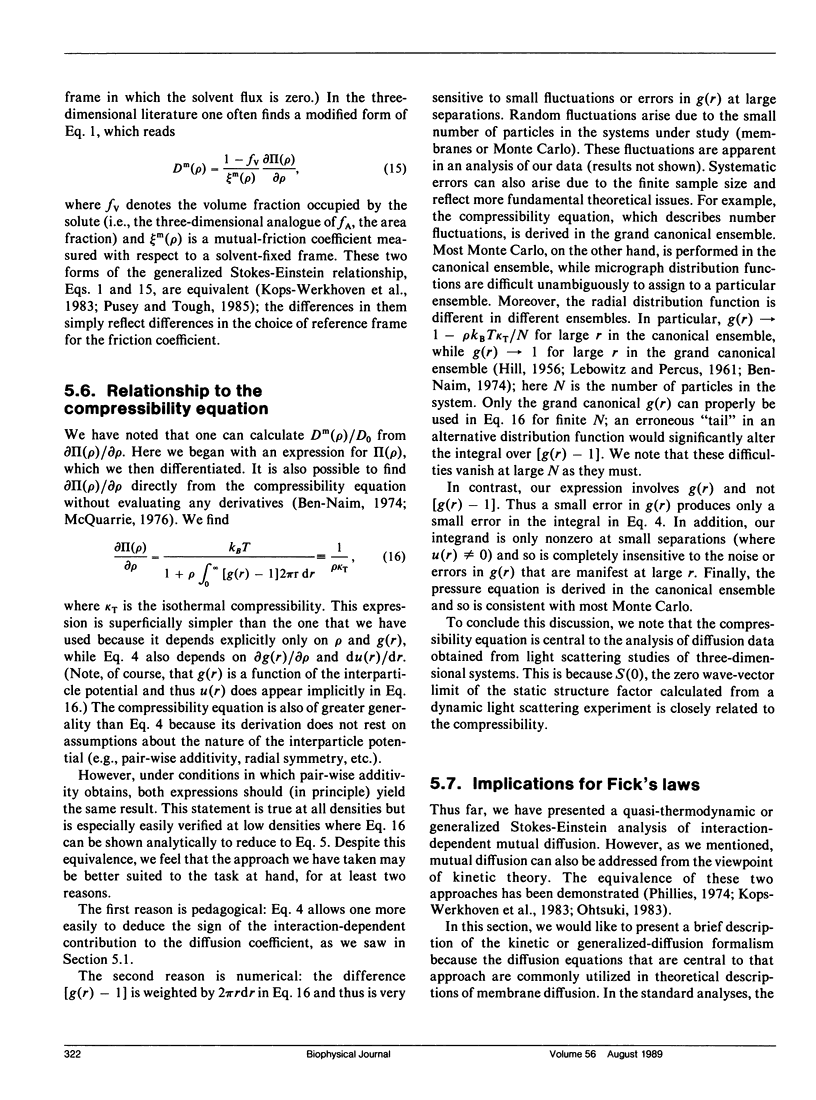
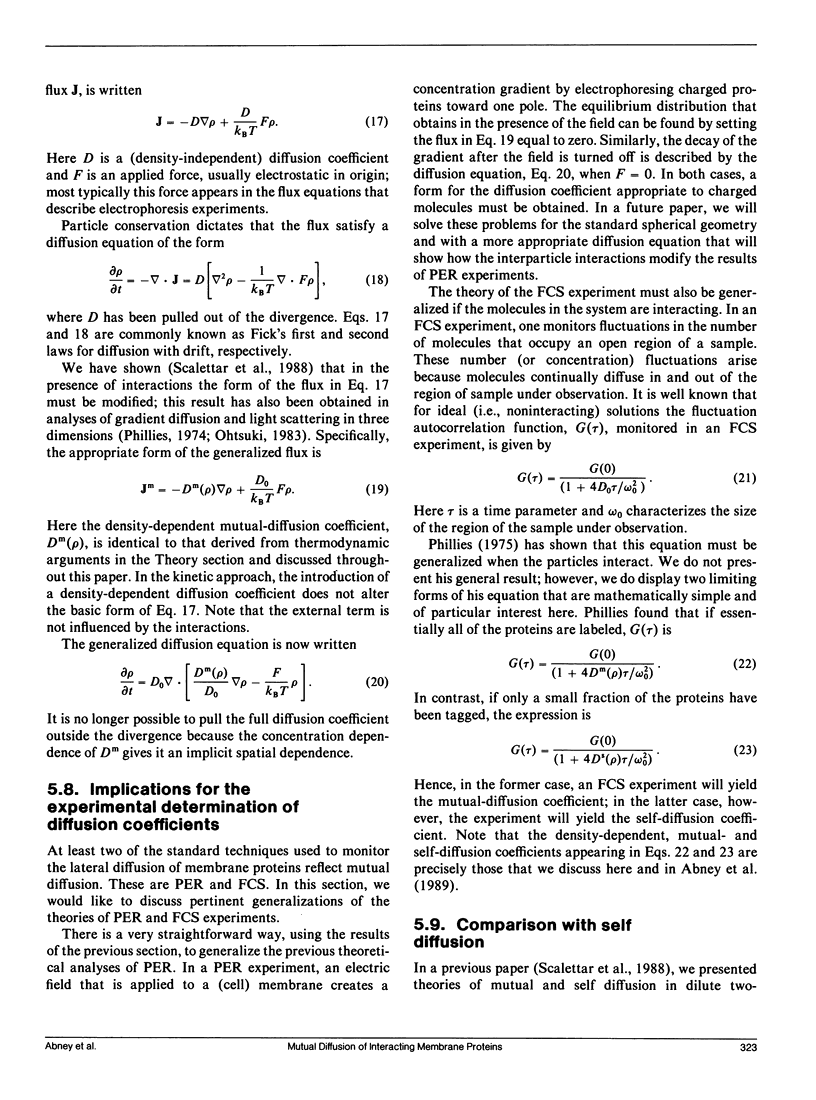
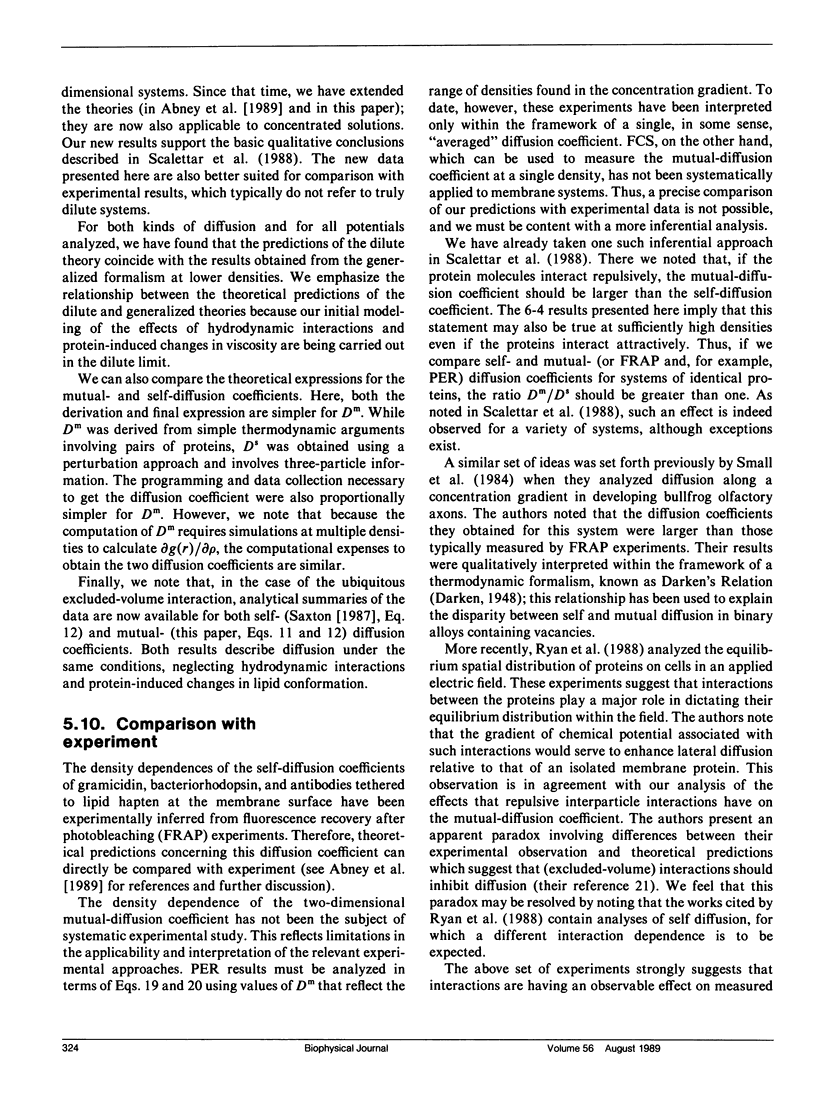
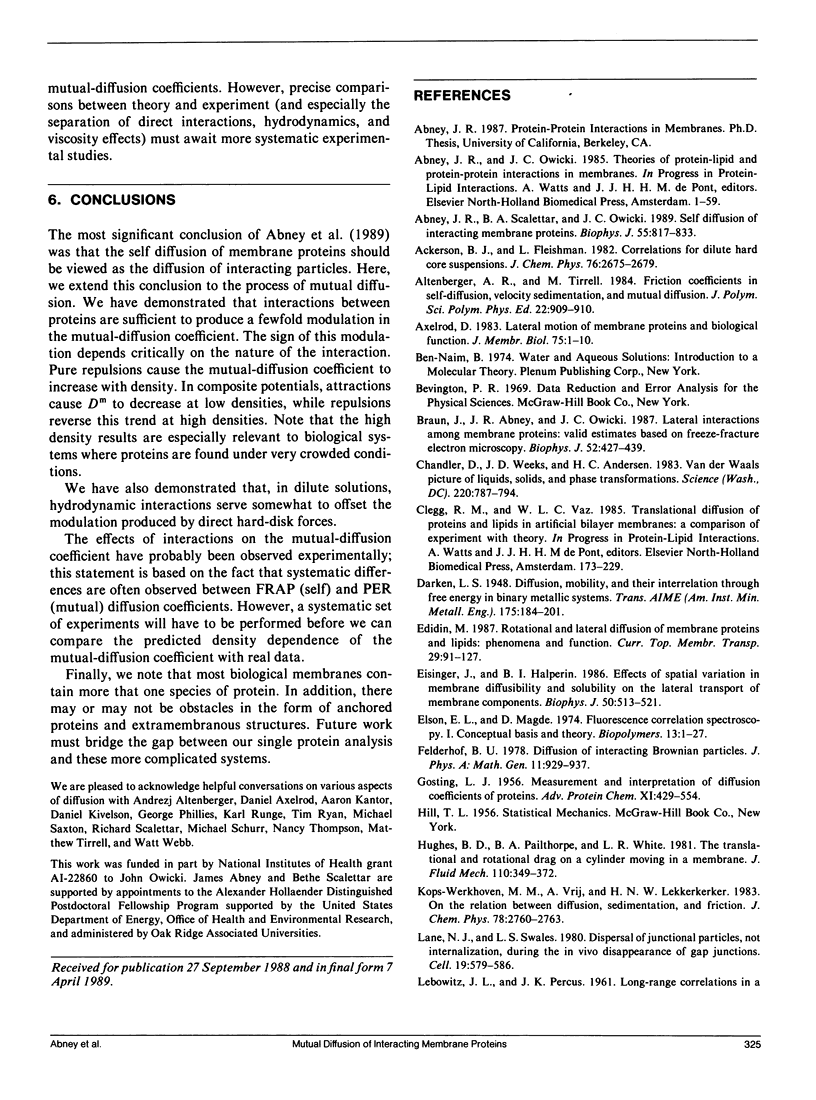
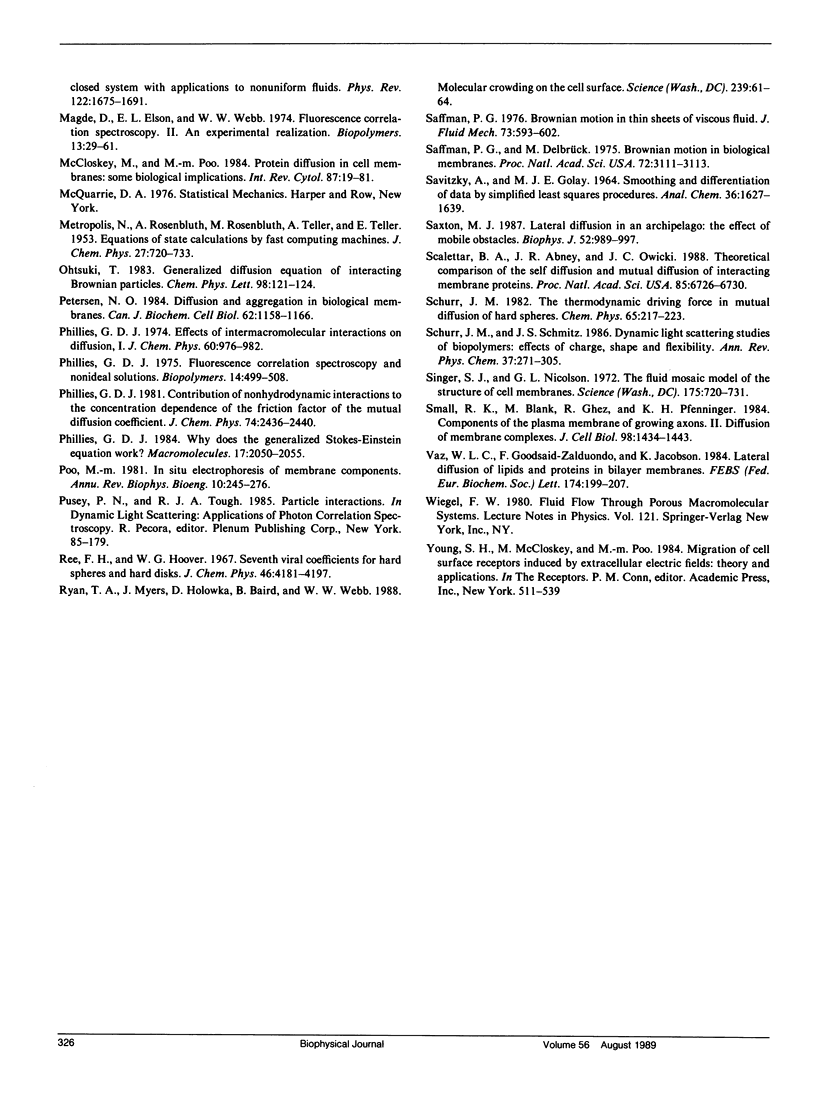
Selected References
These references are in PubMed. This may not be the complete list of references from this article.
- Abney J. R., Scalettar B. A., Owicki J. C. Self diffusion of interacting membrane proteins. Biophys J. 1989 May;55(5):817–833. doi: 10.1016/S0006-3495(89)82882-6. [DOI] [PMC free article] [PubMed] [Google Scholar]
- Axelrod D. Lateral motion of membrane proteins and biological function. J Membr Biol. 1983;75(1):1–10. doi: 10.1007/BF01870794. [DOI] [PubMed] [Google Scholar]
- Braun J., Abney J. R., Owicki J. C. Lateral interactions among membrane proteins. Valid estimates based on freeze-fracture electron microscopy. Biophys J. 1987 Sep;52(3):427–439. doi: 10.1016/S0006-3495(87)83232-0. [DOI] [PMC free article] [PubMed] [Google Scholar]
- Chandler D., Weeks J. D., Andersen H. C. Van der waals picture of liquids, solids, and phase transformations. Science. 1983 May 20;220(4599):787–794. doi: 10.1126/science.220.4599.787. [DOI] [PubMed] [Google Scholar]
- Eisinger J., Halperin B. I. Effects of spatial variation in membrane diffusibility and solubility on the lateral transport of membrane components. Biophys J. 1986 Sep;50(3):513–521. doi: 10.1016/S0006-3495(86)83489-0. [DOI] [PMC free article] [PubMed] [Google Scholar]
- GOSTING L. J. Measurement and interpretation of diffusion coefficients of proteins. Adv Protein Chem. 1956;11:429–554. doi: 10.1016/s0065-3233(08)60425-8. [DOI] [PubMed] [Google Scholar]
- Lane N. J., Swales L. S. Dispersal of junctional particles, not internalization, during the in vivo disappearance of gap junctions. Cell. 1980 Mar;19(3):579–586. doi: 10.1016/s0092-8674(80)80034-1. [DOI] [PubMed] [Google Scholar]
- Magde D., Elson E. L., Webb W. W. Fluorescence correlation spectroscopy. II. An experimental realization. Biopolymers. 1974 Jan;13(1):29–61. doi: 10.1002/bip.1974.360130103. [DOI] [PubMed] [Google Scholar]
- McCloskey M., Poo M. M. Protein diffusion in cell membranes: some biological implications. Int Rev Cytol. 1984;87:19–81. doi: 10.1016/s0074-7696(08)62439-0. [DOI] [PubMed] [Google Scholar]
- Petersen N. O. Diffusion and aggregation in biological membranes. Can J Biochem Cell Biol. 1984 Nov;62(11):1158–1166. doi: 10.1139/o84-149. [DOI] [PubMed] [Google Scholar]
- Poo M. In situ electrophoresis of membrane components. Annu Rev Biophys Bioeng. 1981;10:245–276. doi: 10.1146/annurev.bb.10.060181.001333. [DOI] [PubMed] [Google Scholar]
- Ryan T. A., Myers J., Holowka D., Baird B., Webb W. W. Molecular crowding on the cell surface. Science. 1988 Jan 1;239(4835):61–64. doi: 10.1126/science.2962287. [DOI] [PubMed] [Google Scholar]
- Saffman P. G., Delbrück M. Brownian motion in biological membranes. Proc Natl Acad Sci U S A. 1975 Aug;72(8):3111–3113. doi: 10.1073/pnas.72.8.3111. [DOI] [PMC free article] [PubMed] [Google Scholar]
- Saxton M. J. Lateral diffusion in an archipelago. The effect of mobile obstacles. Biophys J. 1987 Dec;52(6):989–997. doi: 10.1016/S0006-3495(87)83291-5. [DOI] [PMC free article] [PubMed] [Google Scholar]
- Scalettar B. A., Abney J. R., Owicki J. C. Theoretical comparison of the self diffusion and mutual diffusion of interacting membrane proteins. Proc Natl Acad Sci U S A. 1988 Sep;85(18):6726–6730. doi: 10.1073/pnas.85.18.6726. [DOI] [PMC free article] [PubMed] [Google Scholar]
- Singer S. J., Nicolson G. L. The fluid mosaic model of the structure of cell membranes. Science. 1972 Feb 18;175(4023):720–731. doi: 10.1126/science.175.4023.720. [DOI] [PubMed] [Google Scholar]
- Small R. K., Blank M., Ghez R., Pfenninger K. H. Components of the plasma membrane of growing axons. II. Diffusion of membrane protein complexes. J Cell Biol. 1984 Apr;98(4):1434–1443. doi: 10.1083/jcb.98.4.1434. [DOI] [PMC free article] [PubMed] [Google Scholar]


